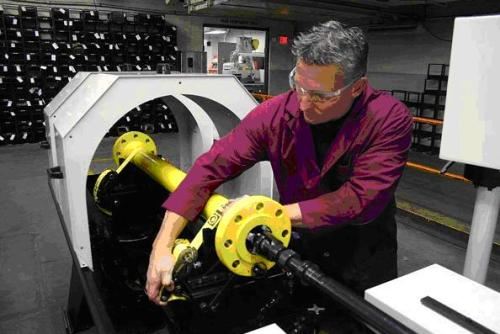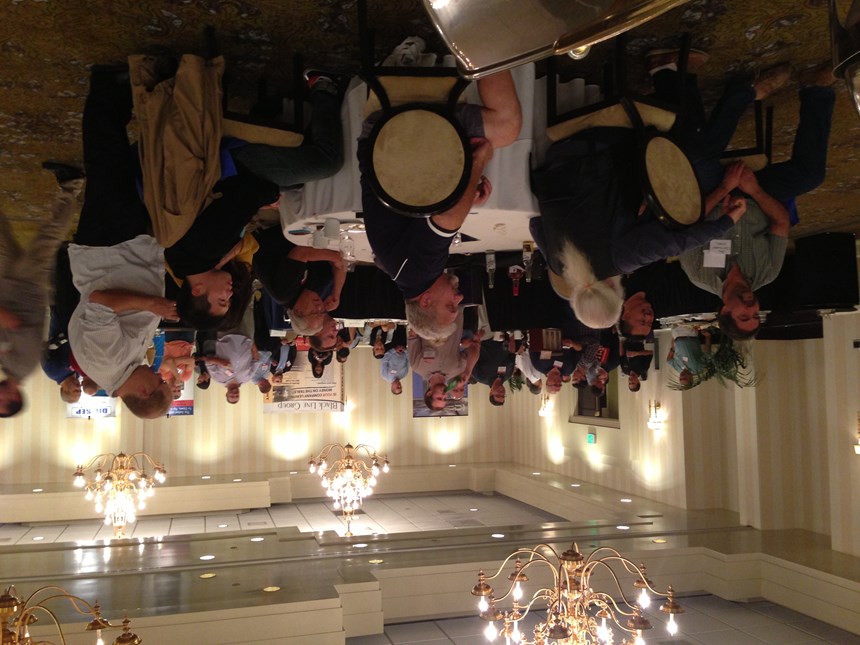Focus on Low Cost, High Accuracy and Short Cycle Times in the Mfr. of Orifice Meter Tubes
A low-cost automated honing system uses existing tools and protects workers.
Share








ECi Software Solutions, Inc.
Featured Content
View More
There are some unlucky jobs in oil-patch metalworking and fabrication that just shouldn't be manual anymore but they are, because better machining solutions are priced and built for higher level applications. ID finishing of orifice meter tubes is one of those jobs that falls through the cracks of being just low-tech enough that it's often still tackled with a die grinder or some form of homemade hone. And when you see the workers with the die grinders and the homemade hones doing this work, you know you're watching the guys who drew the short straws that day.
Meter tubes, also called "meter runs," are critical parts of the orifice meter, a device that's been used for more than a century to measure gas flows. Millions of meter tubes are used worldwide, usually at custody transfer points to determine billing amounts. Thus, there's an expectation for high accuracy, and the meter tube plays a critical role here.
How It Works
The beauty of the orifice meter is that it has no moving parts. It consists of specified lengths of "meter quality" pipe on either side of an orifice plate, which may be several inches thick, with a precisely sized round hole in it. Gas flow through the pipeline is restricted slightly by the size of the orifice, and the pressure difference on either side of the orifice, measured by sensors in the meter tube immediately upstream and downstream, is used to compute fluid flow.
The length of meter tubes varies with the pipe diameter, beta ratio and whether the tubes are upstream or downstream from the orifice plate. The beta ratio is the ratio of the orifice hole diameter to the pipe diameter, and the maximum is 0.75. Meter tubes can be less than an inch in diameter, and up to 24 or more inches, but the majority fall between those two extremes..
Accuracy of the orifice meter requires a uniform and consistent gas flow, which the meter tube aids. The meter run provides a length of straight pipe, precisely sized and finished, which allows swirl or turbulence in the gas stream to smooth out, producing an optimum velocity profile before and after the orifice. A flow conditioner is often used inside the meter run upstream from the orifice to help smooth out the flow within a shorter length of pipe. The maximum and minimum surface roughness on meter run ID's are functions of the beta ratio and nominal diameter of the tube, but typically fall in a range of 100-300 µin Ra. It seems contradictory, but an excessively smooth surface can cause irregularities in the gas velocity.
AGA and API spell out detailed specifications for meter assemblies and components, and manufacturers use meter-quality tubing or standard pipe for meter runs, as long as the end product meets specification. The meter run itself is actually a fabrication with welded flanges or fittings on both ends, so manufacturers must eliminate evidence of the weld bead and restore a correct ID surface finish. This is a multi-step process. The pipe may first be chucked into a lathe to machine out most of the weld bead, but most of the time it's ground down with a die grinder using an aluminum oxide "rock" or carbide burr on a long rod. The final step is honing, often with a manually stroked, homemade hone of some kind.
The manual homemade hone usually consists of a drill motor with a shaft several meters long that mounts standard honing tools. The lack of power stroking, a clutch system, automatic tool feed or load meter/control makes this a very physically demanding job (for manually stroking the part) that requires good tactile sense to find tight spots in the bore, as well as to avoid binding the tool in the pipe – a condition that industry wags find darkly humorous.
Manual hones have dominated in this application because it simply does not demand the power, precision and higher cost of an industrial tube hone, but that's changed with the introduction of low-cost, automated tube hones that can use legacy tooling. The low-price HTA tube hone is an example – an all-electric, lean design, engineered specifically for lighter-duty applications where initial machine cost is critical. Able to mount ANR275-type tooling, the most widely used tools on manual hones, it's aimed at "surfacing" applications, where stock removal is in the range of 0.030 inches. It is ideal for meter runs because it is automatically stroked, safer (clutched), more accurate and inexpensive enough that it pays for itself quickly in reduced cycle times, operator fatigue and workman's comp claims. Other features include Siemens drives and PLC-control with touch-screen HMI for setting all machine parameters, including stroke reversal point, spindle/stroking speeds, and crosshatch angle calculation.
The control features a load meter to determine areas of bore tightness, with capability for dwelling the tool in tight spots using a joy stick. Other advanced capabilities include automatic tool tensioning, set through the PLC. The tool-feed system can be programmed to expand the honing tool to a pre-determined spindle load that is adjustable for any application, protecting the machine, tooling and workers, and allowing inexperienced operators to produce consistent results. This also optimizes the performance of the honing abrasive.
The machine is available for 6-foot and 12-foot part lengths, with bore ID's of 2.5 to 21 inches and maximum part OD of 24 inches, and part weights to 4000 pounds. An electronically controlled, 3-hp AC gear motor powers the spindle at 0-300 rpm, while the servo-driven stroking system has a speed range of 0-90 ft/min.
The HTA includes a 48-gallon coolant reservoir and paper-media coolant filtration unit. Set on casters for easy maintenance, the coolant tank tucks under the machine frame to conserve floor space.
Initial grinding on the weld bead is often still needed before honing, but the speed, consistency and safety of meter tube production are greatly enhanced with this affordable honing solution.
Read Next
5 Rules of Thumb for Buying CNC Machine Tools
Use these tips to carefully plan your machine tool purchases and to avoid regretting your decision later.
Read MoreSetting Up the Building Blocks for a Digital Factory
Woodward Inc. spent over a year developing an API to connect machines to its digital factory. Caron Engineering’s MiConnect has cut most of this process while also granting the shop greater access to machine information.
Read MoreBuilding Out a Foundation for Student Machinists
Autodesk and Haas have teamed up to produce an introductory course for students that covers the basics of CAD, CAM and CNC while providing them with a portfolio part.
Read More















































